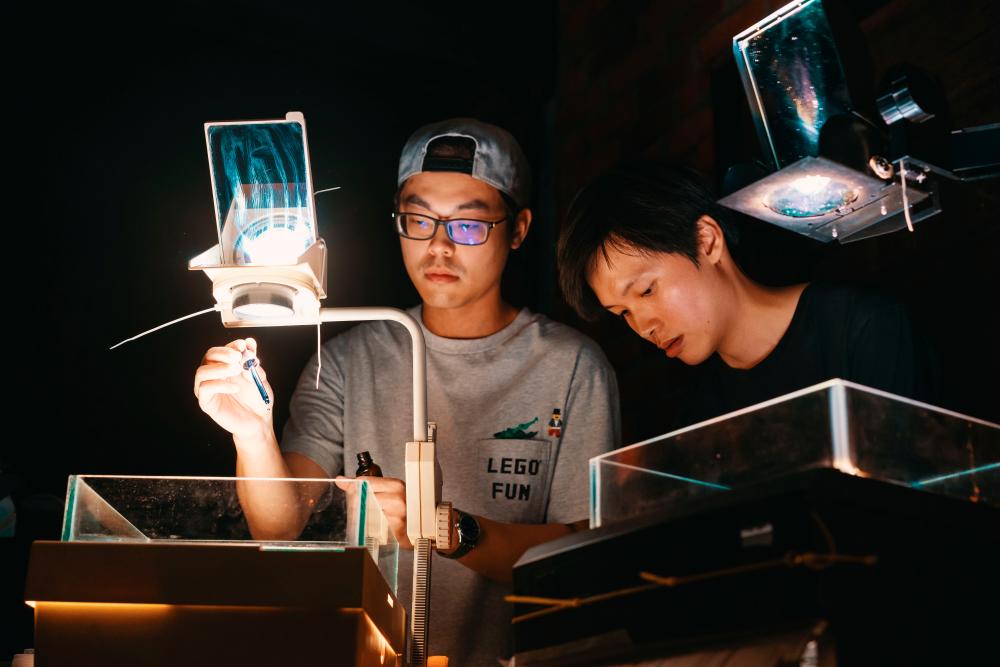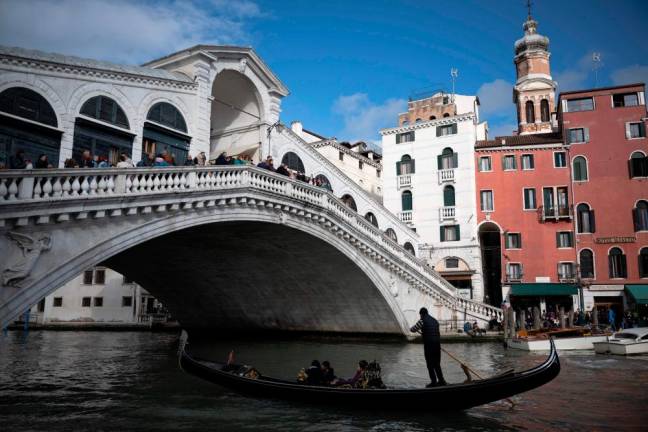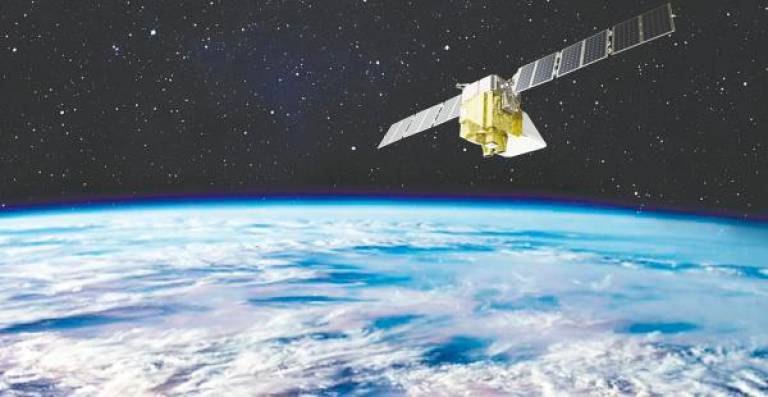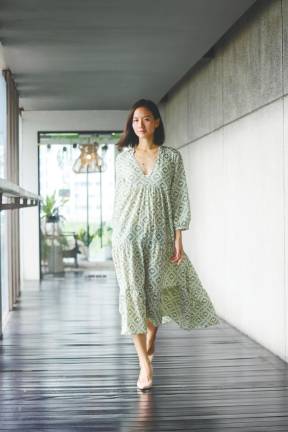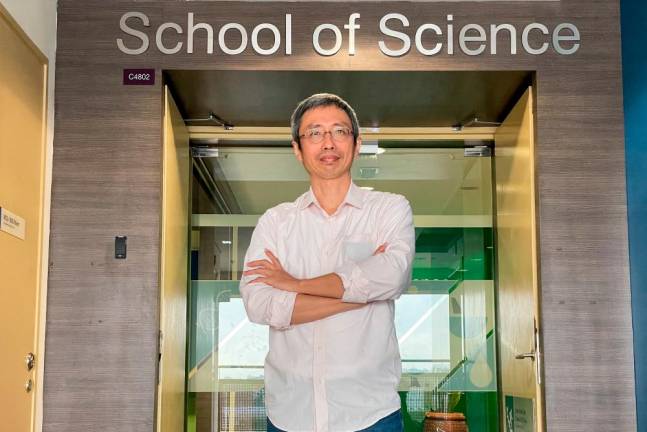A LIGHT-bending technique caught the attention of architect Justin Lee and chef Ooi U-jean, and together they co-founded creative studio Luna Macula to explore and experiment with liquid light art.
Their respective roles and skills balanced each other out; what one lacked, the other fulfilled.
The two 29-year-old interdisciplinary artists call their work ‘projection painting’, as it’s built upon an analogue relationship between light and liquid to form dynamic and psychedelic visuals generated in real-time.
It’s a living and breathing expression that plays out as an experiential painting – a performing art so immersive and compelling, that it has a way of dissolving the divided tension between the performer and the audience.
However, no two paintings are alike. The intangible painting that appears superficial in many ways dances alongside the performer in an intimate setting, and becomes multi-dimensional as a whole.
This was evident during Luna Macula’s most recent collaborative performance titled Impermanence at Kongsi KL, comprising a simultaneous large-scale installation and live performance, piecing together sound, movement and analogue visuals that traverse the impermanence of the universe.
What is Luna Macula about?
Lee: “Luna Macula specialises in liquid light shows, a technique discovered in the 1960s and later adapted into music videos and performances. It creates really funky and vivid visuals that are also psychedelic.
“We’re entirely self-taught, which means we explored a lot, and [went] through many trials and errors using only overhead projectors. From the experiments, we also discovered and created many techniques and patterns that we think, regardless, are material through the analogue process.
“When the effects are projected onto a surface, they appear as a light show.
“I guess what makes Luna Macula different from others is that we’re taking on time-honoured analogue techniques in an increasingly digitised world.
“Digital art is created with computer software using a coding system which can be replayed multiple times [depicting] the expected visuals, but analogue art such as a liquid light show is a psychical, material act that cannot be done with a computer.
“Each attempt and outcome is different, so there’s always room for flaws but that doesn’t mean they’re imperfect. In fact, we embrace imperfections, at the same time, we uphold the consistency to meet our standard.”
What’s the meaning behind Luna Macula?
Lee: “Luna means the moon, and macula is the central area of the retina in our eye that creates images to be sent to our brain.
“If there’s a spirit animal that describes Luna Macula, it would be the cuttlefish. The entire body, including the eyes, of the cuttlefish changes colour according to its mood or [when it] camouflages itself in the environment.
“We try to mimic a realm in between the water and the cosmos, hence the name Luna Macula.”
What’s the narrative behind Impermanence?
Lee: “The name of the show Impermanence summarises [the intention].
“It depicts the impermanence of nature that evokes the forces of the universe through a geological time span. Natural phenomenon shapes the foundation of the earth, where rocks over time corrode with rainfall. Meaning, even the hardest particle is fragile over time. Water shapes the mountain, and the residue gets taken to the sea.
“There’s also the emotional aspect of the show, this is where the performers come in. What’s more, we as human beings are also impermanent – we live up to 80 years old on average, but compared to the scale of the universe, our material desires are temporal. The show essentially reminds us to be humble through our actions.”
How is the value being measured for intangible artwork such as projection painting?
Lee: “We’re not merely creating a painting, we’re also performance artists. Especially in Impermanence, where we’re not situated at the back of the stage, but rather upfront and part of the performance.
“When you go to an art gallery, you don’t see the artist creating an artwork. However, with projection painting, we do it live on-the-spot and we don’t pre-record it.
“It’s valuable in that sense, similar to what a musician, actor or movement artist does. It’s the creative process and the creative output that we deemed valuable. It’s very much impermanent, you can’t buy it nor can you keep it at home.
Ooi: “Regardless of how many times we’ve done it, each result will come out differently with varying emotions and feelings. It also changes according to who we collaborate with, what type of music is in sync with the projection painting, and so on.”



